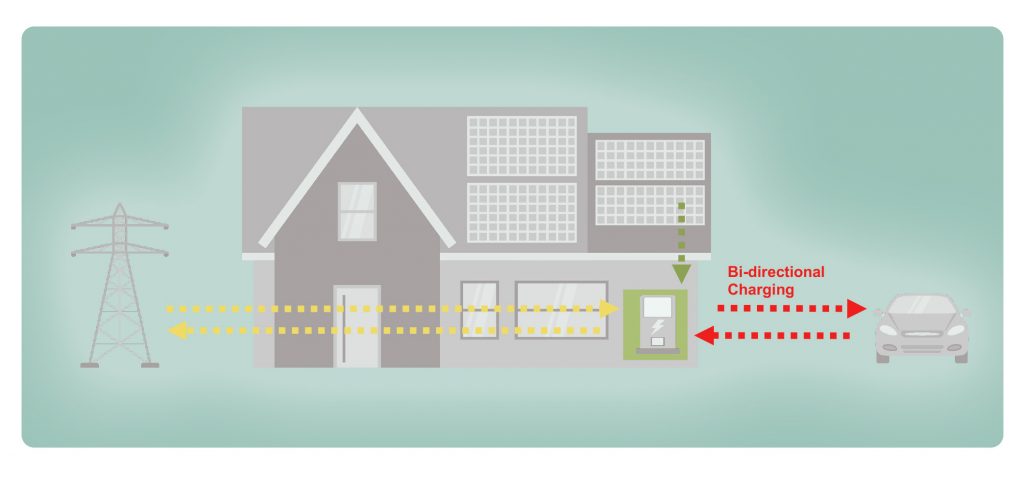Munich, Germany. 27 July, 2022 – On hot summer days, the share of solar power in the energy mix reaches record levels. But what to do when the sun is not shining? With bidirectional charging, solar power from the photovoltaic system is stored in electric cars and home batteries and fed back into the home grid in the evening hours or when needed to operate household appliances. This protects the environment, saves money and creates further incentives for switching to emission-free electromobility.
Infineon Technologies AG and Delta Electronics, a Taiwan-based global provider of power and energy management solutions, have developed a three-in-one-system that integrates solar, energy storage and charging of electric vehicles. Thanks to bidirectional inverters, the electric car is not only charged, but can also be used as a buffer storage or as household emergency backup power. More and more cars are equipped for this. Looking ahead, bidirectional energy flows could also be used to realise new vehicle-to-home (V2H) and vehicle-to-grid (V2G) solutions.
“To make a sustainable contribution to decarbonisation, we must think electromobility holistically: from green power generation to a stable, efficient grid infrastructure to storage and consumption,” says Peter Wawer, head of Infineon’s Industrial Power Control division. „With our solutions for bidirectional charging, the electric car can be charged inexpensively with solar power at home and also serves as a buffer storage.”

A single-family home can consume an average of 10-15 kWh of energy per day. A fully charged car battery with a capacity of 30 to 100 kWh could therefore theoretically bridge a few days as an emergency power solution. Homeowners thus secure inexpensive electricity as well as more independence in power supply.
The new system provided by Delta allows a maximum continuous current of 34 A and achieves peak efficiencies of more than 97.5%. To increase power density, energy-efficient power semiconductors made of silicon carbide (SiC) from Infineon are used. Compared to silicon-based semiconductors, the compound material SiC reduces energy losses when converting current by around half. The size of charging stations can also be reduced by about 30%. With SiC, photovoltaic systems become more powerful, charging times at fast-charging stations and wallboxes are shorter, and the range of electric cars 5% to 10% higher.
Green mobility from well to wheel
By the end of this decade, more than half of all newly registered vehicles are expected to be partially or fully electric. Green mobility can only be achieved if both vehicles and energy are carbon neutral. One key therefore lies in the use of wind and solar energy. The fluctuating availability of these energy sources must be balanced by electrical storage systems to stabilise the grids though.
Semiconductors from Infineon are an important driver of green mobility. Infineon is the number 1 in power electronics, enabling the expansion of renewable energies and the energy-efficient storage and use of green electricity. As the global market provider for automotive semiconductors, Infineon pioneered the development of electric vehicles. Almost every second electric or hybrid car produced in 2021 uses Infineon semiconductors in the inverter. Infineon power semiconductors are also setting standards in charging stations: the 50 kW Hypercharger from alpitronic is the wall-mounted charging station that allows two cars to be charged simultaneously.
For more information about Infineon’s contribution to energy efficiency visit Infineon.
Comment on this article below or via Twitter: @IoTNow_OR @jcIoTnow










